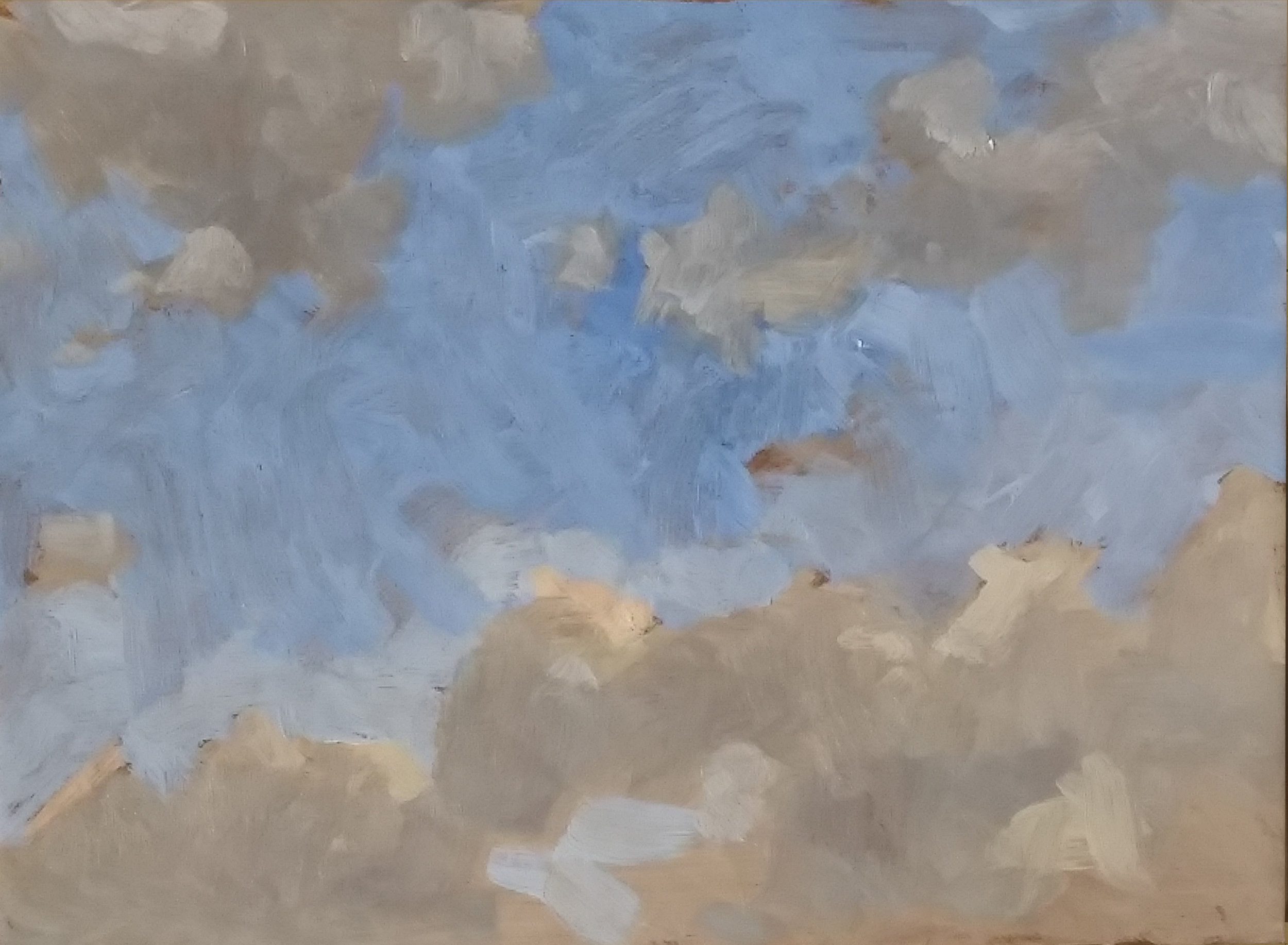More Summer Skies
John Constable may have had a good point about painting as a branch of science — or, in the lingo of his time, “Natural Philosophy” — with each picture thought of as an experiment. What exactly is a scientific experiment but an attempt to study a natural phenomenon by restricting the possible factors which may or may not produce it? Particle physicists buried a vat of water hundreds of feet below the surface of the earth and armed it with neutrino detectors, knowing that only neutrinos could get to such a vat. The solar eclipse of 1918 provided a means of verifying Einstein’s General Theory of Relativity by restricting the various factors which might bend the passage of light. Keppler spent two decades hunched over Tycho Brahe’s precise observations of the positions of the planets, trying to find a pattern. Lois Lane spent even longer, attempting to devise a situation which would require Clark Kent and Superman to appear in the same time and place. And so on. Experiments are scenarios devised to establish or disqualify a hypothesis. If you’ve got a hypothesis, and have a way to test whether it works or doesn’t work, you’re performing an experiment, and in every sense of the term, you’re doing the work of a scientist.
Me, I’ve given a lot of thought to the hue found in the light areas of summer clouds. They can’t be a pure form of white, but what sort of color might they be? The sky sketches posted earlier were an attempt to answer that question. In each, I mixed a color which I thought corresponded to what I saw before me. But looking again at them, their tinted orange hues made no sense, and did not evoke the sensation of summer skies. So I whacked out three more today.
Here was the first. I did mix some Cadmium Yellow Medium with my white, but tried pretty hard to reduce its intensity. You see orange lights in the clouds below, but the chroma is quite subdued as we rise from the horizon toward the zenith. A good painting? I don’t know. But a good experiment. This is closer to the mark than the sketches I posted earlier.
The second sketch also could be termed a good experiment.
And yet another experiment. All three of these were designed to isolate and prove (or disprove) my motion that my clouds were unbelievable, in large part, because I was painting them with too intense a series of colors. In fact, these three are actually an experiment in the use of Ivory Black, which was used to paint in the darks of the clouds here.
Bad? Good? Neither. Three experiments. I’ll mull over them and see what ought to be adopted from them for the procedure of landscape painting.















